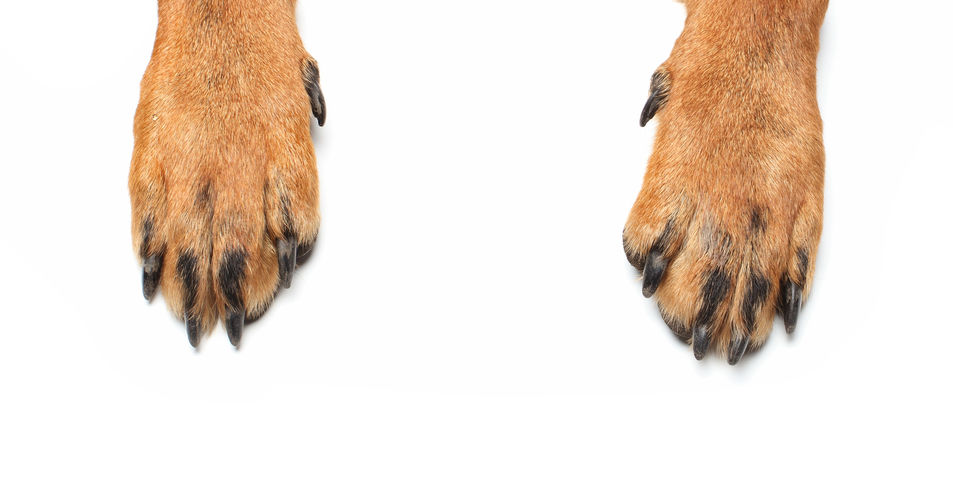
What are dewclaws and can you find dogs without dewclaws? Today we address this funny little appendage and its impact on your pup.
What are Dewclaws?
Dewclaws are pretty much the “thumbs” of your dog. Some dogs have dewclaws that attach to the bone of the foot while others are only attached at the skin. These appendages grow higher on the leg than the foot. For the most part, dewclaws never touch the ground. Like the cat, dog dewclaws are placed inside the front of the leg. Some species also have dewclaws on their hind legs. These appendages are often only held on by the skin.
Due to the dewclaw never touching the ground, the nail doesn’t wear like the nails on the feet. Therefore, it requires regular trimming.
How Do Dogs Use Their Dewclaws?
According to PetMD, “A dewclaw that is attached by bone to a dog’s front foot has a definite purpose. When dogs run, their front feet often bend to the point where their dewclaws come in contact with the ground. At high speeds (especially when turning) or on slippery surfaces, these dewclaws provide extra traction and help stabilize the carpal (wrist) joint.”
Some dogs even use their dewclaws to climb, hold objects while they chew, and get traction on slippery surfaces. However, dewclaws that only attach at the skin are not useful in these manners.
Do Dogs Need Dewclaws?
Physically, dewclaws are probably not necessary for dogs, but there is one study out of Canada that shows some concerns with dewclaw removal. “With so many carpal bones that don't tightly interlock with the adjacent bones, the ligaments of this joint can be easily stretched and even torn when torque (twisting) is applied to the leg. The dewclaws have the important function of reducing the torque that is applied to the front legs, especially when dogs are turning at a canter (the main gait used in agility).”
The result of dogs having their dewclaws removed proved to have some arthritis issues in the future. So, does your dog physically need dewclaws? Well, dogs born without them makes it clear that they aren’t. However, removing natural dewclaws may be problematic in the future.
Should Dewclaws Be Removed?
If your dog’s dewclaw is only attached by the skin and there’s a concern for damage to the appendage, then talk to your vet. For dogs with attached dewclaws, surgery may be far more traumatic. And as the Canadian study showed above, it may even impair your dog’s mobility as they age.
If you keep your dog’s nails trimmed, dewclaws aren’t likely to be a concern.
Dogs Without Dewclaws
This is a tricky topic and can only be answered by looking at a dog. Since dewclaws are genetic, they can vary from breed to breed and dog to dog. Some dogs have a combination front and rear dewclaws while others only have one or the other. Other dogs may only have a small bit of protruding skin without a nail at all.
Therefore, you are not guaranteed a breed that has absolutely no dewclaws. If you are purchasing a dog from a breeder, you can ask about the puppy and whether they have dewclaws. Likely, they will.
Talk to Your Vet if You’re Considering Dewclaw Removal
Dewclaw removal is an elective surgery that can have some unexpected results. Be sure to discuss thoroughly with your vet before deciding. If you do decide to get it removed, it’s commonly done when the dog is around two to five days old. As the dog ages, the surgery becomes more difficult. If you show your dogs, you may find that some dog breed standards call for removal.


